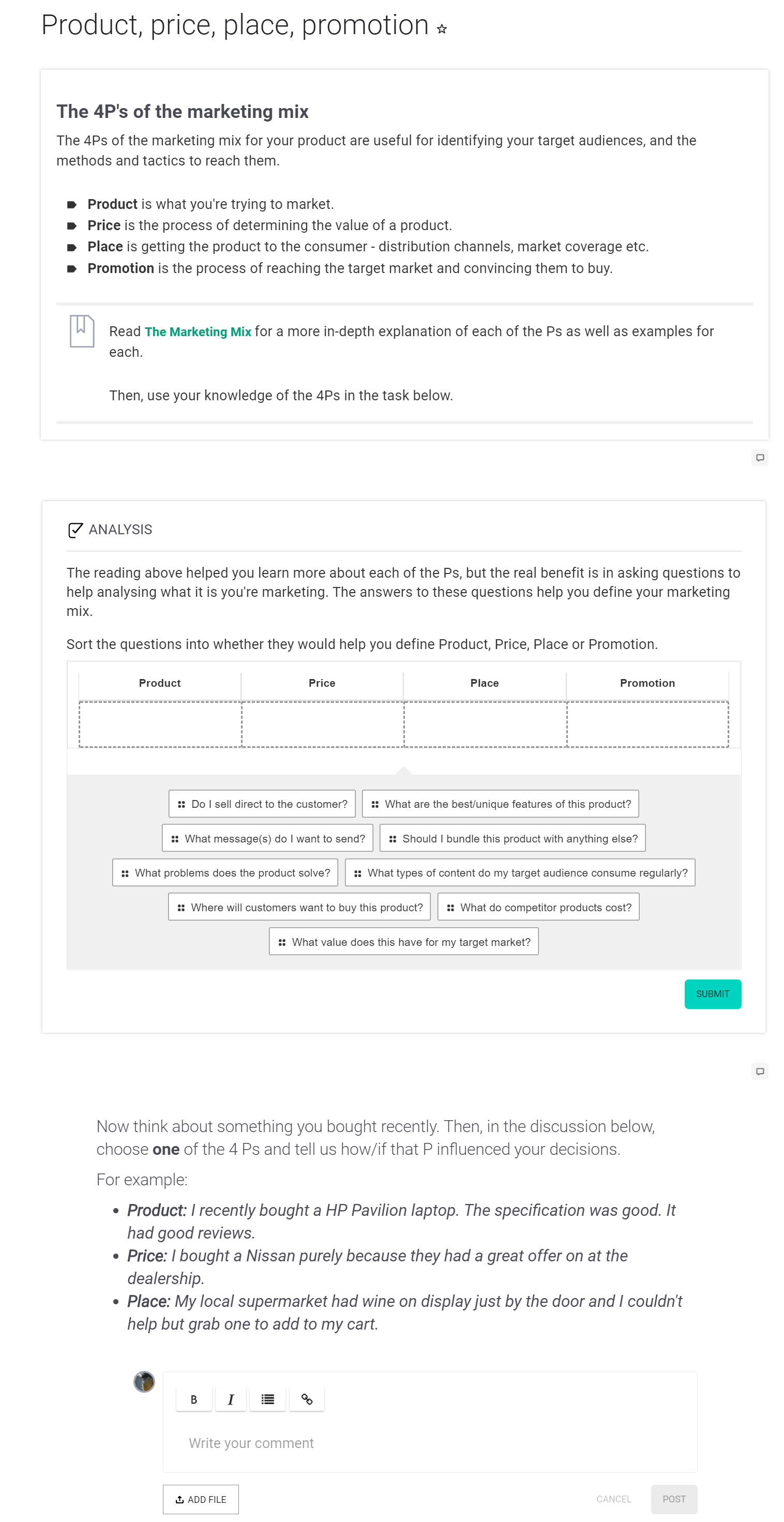When you're tasked with creating an online course, you often already have (or are given) existing resources - readings, articles, presentations, videos, etc. etc.
Resources in a "course"
The temptation might be to recreate what you've seen (or used) elsewhere - a webpage with an outcome and some links. Something like this.

But, before you do that... we want to take you through some questions. These questions, in turn, will help you come up with some great ways to increase relevance and engagement for your learners.
Why include this resource?
For each resource you want to use in your course, you should interrogate it. It needs to justify it's existence. Questions here focus on a) if you really need this resource and b) why you need it.
- What is the main point/theme in this resource? Is this point/theme covered by any other resources?
- Why do I want learners to read/watch this thing? What are they going to get out of it?
- How will this resource help learners towards their goals (and/or the course goals)?
Often, when we're putting a resource in a course we know full-well why we've put it in there. We know why and how it's useful... We just forget to tell learners.
Use the answers to the questions above to craft an introduction to every resource you want to put in a course.
Tell learners what's in it for them.
Folks in communications and marketing have used this for a long time. They call it, WIIFM - What's in it for me? If you answer this question for learners, they'll be much more motivated. And, they'll be able to focus on what's really important.
What should learners DO with this new information?
As Dewey tells us...
“Give the pupils something to do, not something to learn...”
A list of links does not make great learning. Instead, you need to keep learners active - thinking, hypothesising, explaining, searching for patterns - anything that's not just passively viewing information. Active learning leads to greater engagement, deeper learning and a better chance of concepts making it into long term memory. We love it so much we've got a whole blog post on it.
So, for each resource, give them something to do. Help your learners to draw out the ideas in the resource. To figure out what you want learners to do, cast your mind back to the answers as to why you included that resource.
- Does the resource help explain important ideas?
Get learners to match definitions, write their own explanations, or compare and contrast ideas. - Does the resource have great examples or case studies?
Get learners to sort examples and non-examples, analyse the example/case from the resource, or give them a scenario where they have to make a decision or come up with a solution. - Will the resource help them with their assessment?
Give them an intermediate task that will help scaffold them to their assessment and provide an opportunity for formative feedback.
Check for alignment
Your purpose for the resource needs to align with the task you give your learners. Otherwise what's the point?
For instance, say you give learners a resource on marketing principles. You've said the purpose for this resource is:
The resource really shows the evolution from the marketing era to the value era.
And the task you give learners is:
Share in the space below why you think marketing is important.
These don't match. My thoughts on why marketing is important doesn't help me to draw out and unpick the main thrust of the resource (which is the change from marketing to value). Instead, it's a distraction.
You might find that going through this secondary process makes you look at the resource again and say: "Hang on, this resource isn't actually focused on the skills I want learners to be practising." Brilliant. Ditch it. If it's not useful for learners, don't force fed it to them.
For every resource, an intro and a task
If you follow along with what we've described, you'll end up with an introduction and whats in it for me? for every resource, followed by a task to help learners consolidate what they've learned from the resource.
Intro
Reading
Task
In general, we suggest one page for each resource so that on any given page, the learners are only focused on what that particular resource is focused on.
This is what that might look like.

So, whenever you're including a resource in a course...
- Interrogate it, make it justify it's place in your course.
- Use this to write an introduction for your resource that explains the purpose for learners, tell them what's in it for them.
- Include an active task after the resource to help learners wrestle with and consolidate the main points in the resource.
Your learners will be challenged, engaged and more likely to learn (rather than just read).


